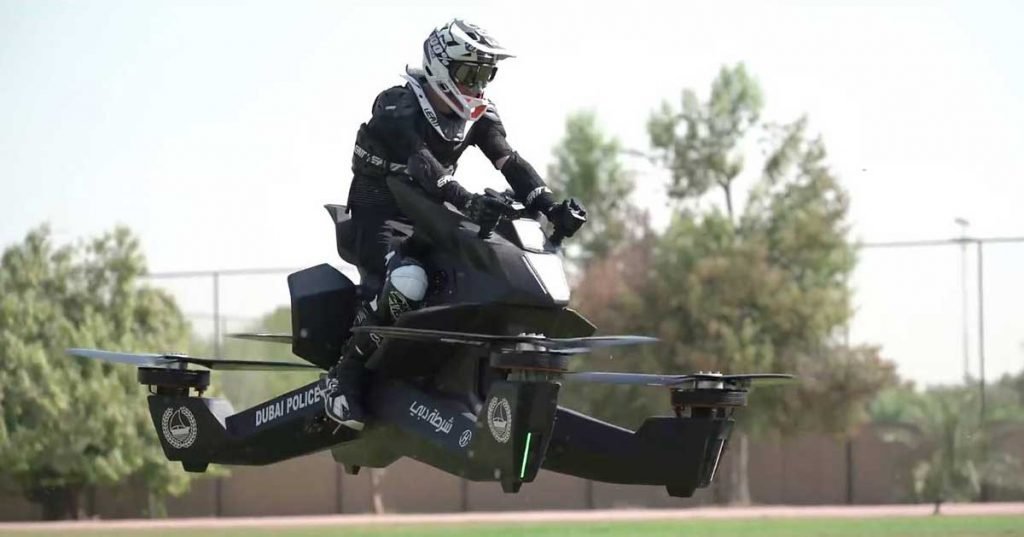Posted By
Clint Lawrence, founder of Motorcycle Shippers. Helping give riders more freedom to enjoy the bikes they love. clint@motorcycleshippers.com
This week, more than 182,000 tech enthusiasts from around the globe flocked to Las Vegas for CES, the world’s most important tech show. Motorcycle Shippers was right there with them, trekking the conference’s 2.7 million square feet of exhibits, interactive displays and other experiences in search of the latest and greatest in motorcycle innovation.
Given that LiveWire preorders are now open, it’s no surprise that Harley-Davidson had its first all-electric motorcycle front and center at CES—even if its two other electric bike concepts were actually a lot more exciting. Meanwhile, the helicopter company Bell dominated the showroom floor—literally!—with its massive Nexus air taxi. And while self-driving cars were an unavoidable trend at the show, there’s no denying the excitement surrounding flying cars, Hyundai’s walking car and electric scooters at CES 2019.
Here are a few standout motorcycle technologies from the 2019 Consumer Electronics Show—some available now, and one that hasn’t hit shelves just yet.
AR is coming to your motorcycle helmet
With a built-in camera light sensor, headphones and optics mic, the LiveMap helmet is applying the best of AR and integration to the world of rider safety and navigation. Other features worth noting? Customizable alerts and calls, a built-in camera, robust audio and voice controls, and visibility technology that keeps the helmet’s image looking crisp no matter what Mother Nature has in store for your ride.
This one might not be ready to hit shelves just yet, and the price tag is estimated to be a hefty $1999. Still, the LiveMap moto helmet could be a significant sign of what’s to come in the world of motorcycle accessories. (: BMW and Skully both reportedly have augmented reality helmets in the works.)
Hovercrafts and motorcycles collide
Another awe-inducing model on the showroom floor was the Hoversurf Hoverbike. As its name implies, it’s essentially a motorcycle that hovers or flies. Hoversurf wasn’t permitted to fly the Hoverbike S3 2019 indoors during the conference—no surprise
At more than 250 pounds, the single-seater can fly up to 16 feet above ground level at speeds up to 6 mph. But keep in mind that, much like electric motorcycles, the Hoverbike is no match for the duration that a traditional motorcycle allows. Depending on the weight of the driver, the model can only be airborne for 10 to 25 minutes at a time.
If the Hoverbike seems lightyears from reality, think again: Last year, the Dubai Police Force tested out hover-motorcycles to help its officers arrive to the scene without suffering in traffic. But then again, this is the same police force that has pledged to replace 25% of its officers with robots by 2030.
The Hoverbike S3 2019 is fully launched and could be yours for a cool $150,000.
The Niken steals the show, again
It’s no surprise that a brand selling 5.4 million motorcycles annually had a supersized presence at CES. Fitting in right among the most tech-forward companies of the era (think: Google and Microsoft), Yamaha Motors took the opportunity to showcase eye-catching innovation: its widely lauded three-wheel Niken motorcycle and the Tritown three-wheel scooter concept, plus demos of its unmanned helicopter and AI technologies.
You may have heard that Yamaha acquired Brudeli, a three-wheel motorcycle manufacturer, last year. Given that news, and the buzz surrounding the Niken ever since its debuts at the Tokyo Motor Show and Europe’s EICMA, it’s no surprise that Yamaha made the Niken the centerpiece of its sizable CES booth. Joining it was the Tritown scooter, which employs the same three-wheel system to let the rider, as the brand puts it, “just glide.”
Check out the full Niken specs here, and watch this Tritown demo from the CES showroom floor.
What motorcycle technology are you most excited about in 2019? Do you think technology is enhancing or taking away from the experience of the ride?

